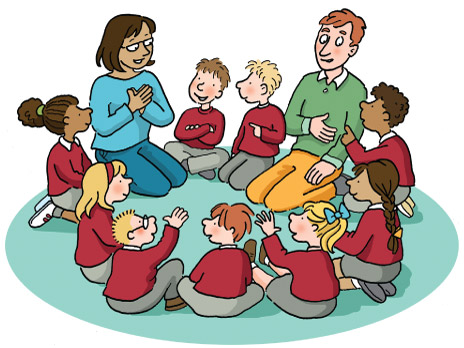Boys, girls and reading
In the following case study, Dewi and Harri are lively 8-year-old twins with an older sister, Lowri. She is 11 years old and an avid reader. Carys, their mother, is keen to foster a love of reading in the twins and is aware of how important it is to sit with them and read. This is easier said than done, not only because of lack of time, but also because the twins are very different.
Case study: Dewi and Harri learn to read
When he is in the mood, Harri loves to sit beside Carys and look at books. He is starting to read quite fluently and enjoys spelling out unknown words, as he has been taught in school. Harri's favourite book is Captain Underpants because it makes him laugh. This is a special time for both of them but Carys feels guilty about Dewi because he is not getting the same attention.
Dewi is a reluctant reader and appears to have little interest in books. He says about reading that ‘it’s boring’ and he never wants to unpack his school reader.
The boys’ teacher, Miss Evans, has reassured Carys that Dewi enjoys circle time, which often focuses on reading and literacy. Many primary schools use circle time where the focus is more on the children than the curriculum. The class sits with the teacher in a circle and ‘games’ are used to encourage cooperation, listening and speaking skills.
There are some general rules for circle time; for example:
- Everyone has the right to be heard and a duty to listen.
- There should be no ‘put-downs’. In the first stages it may be that the rule should be that all statements made should be positive.
- Everyone has the right to pass.
- Everything said should be confidential unless otherwise agreed.
It is a good way of developing peer relationships within the class. Very often a teaching assistant will also take part in this activity and they will model active listening skills for the children. Teaching assistants often position themselves next to or close by children who may need some additional support to benefit from circle time.
Miss Evans has started to use this time to encourage the children to talk about books they have read. The children also listen to each other reading in class, which is known as peer reading. These activities have made reading more of a social activity and Dewi’s peers are beginning to have an influence on his interest in reading. Miss Evans has also informed Carys that reading is not just about books and Dewi can develop his reading skills just as well on the computer, which he seems to enjoy more.
Dewi's teacher is confident that he will make progress in his reading because of the social interaction with his classmates and friends during circle time.
Carys is concerned about the difference in development and academic progress between Harri and Dewi. She does think that their happiness is the most important thing but the nagging concern over Dewi's progress or lack of it resurfaces in her thoughts quite often. She thinks that Dewi's current teacher Miss Evans is ‘a bit special’.
Carys believes that it is through a deep understanding of Dewi's needs and interests that Miss Evans has been able to work some kind of magic. Since being in her class, Dewi's attitude and approach to being at school are now much better. This can also be attributed to the additional support Dewi receives in school to develop his reading skills and interests. The school involved carys in discussions about Dewi's ongoing progress and raised concerns that he might have special educational needs.
Special educational needs affect a child’s ability to learn and this may include their reading and writing – for example, if they have dyslexia. If a child has special educational needs they may require an education and health care (EHC) plan. As a teaching assistant you will be in an ideal position to raise concerns and you will be able to request that the local authority carries out an EHC on behalf of a child in your care. You will work in conjunction with the parents, teacher and any other support workers in deciding whether to request an EHC. Visit the government website gov.uk for more information about children with special educational needs [Tip: hold Ctrl and click a link to open it in a new tab. (Hide tip)] .
Section 4 of this course looks at special educational needs and disabilities (SEND). You may find it helpful to study that section.


